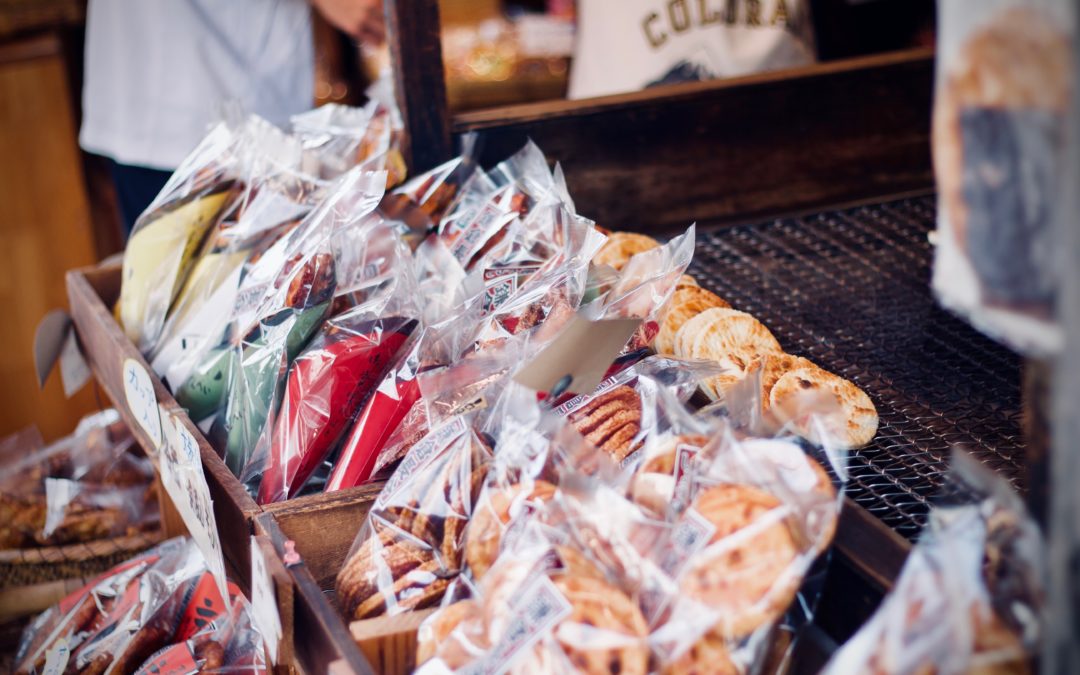Food grade plastic is plastic material deemed safe for use with foods. Plastic must meet strict requirements in order to be considered food safe, and is regulated by higher standards than plastic used for other purposes. Let’s take a closer look at food grade plastic, what makes it safe for food over other types of plastic and some examples of how food grade plastic is used.
What is Food Grade Plastic?
Food grade plastic must be produced using safe materials in a safe environment. For plastic to be used in contact with food or food products, it must:
- Be protective: to act as a defense against moisture or contamination without breaking down
- Be durable: to protect food items during manufacturing, packaging, storage, transportation
- Be chemically safe: to not contaminate food it comes in contact with. This means the plastic must have no tendency for “leeching”, or the potential for chemicals to seep into the food, where they could either affect the taste or cause adverse health effects for the consumer.
How Does Plastic Become Food Grade Plastic?
To be certified as safe and labeled food grade, the plastic must meet strict standards set by the Food & Drug Administration and other regulating organizations.
Food Grade Plastic Materials
First, the FDA must approve of the materials being used to manufacture the food grade plastic. They examine all ingredients and additives to ensure they are safe and will not affect the taste, odor, or color of the food. They will also test the materials for adverse responses to temperature changes, humidity and moisture, or the presence of other chemicals, oils, or alcohols. This verifies that the plastic will hold up for packaging, manufacturing or other uses.
Food Grade Plastic Manufacturing Facility
Secondly, the facility where the food grade plastic is manufactured must meet stringent cleanliness requirements and have good manufacturing practices in place to minimize potential risks of contamination of its products. Standards documents issued by the International Standards Organization regulate the environment of the manufacturing facility to ensure consistently high quality and clean products. ISO 9000 is the minimum standard with which most food grade plastic manufacturers must comply.
Food Grade Plastic Certifications
Lastly, once the food grade plastic has been used to make plastic film or bags to ship, store, or transport food, its quality will be checked again by the manufacturer and attributed with the correct certifications for food grade and safety.
The Food Safety System Certification (FSSC 22000), established by the Global Food Safety Initiative (GFSI) is one example of a food safety certification for food grade plastic. With this certification, a quality management system is established for the food grade plastic product that continues throughout the product’s lifetime, from manufacturing to the end consumer, to ensure it is consistently high quality and food safe.
Uses of Food Grade Plastic
Food grade plastic is used in many applications, from the packaging and shipping of harvested crops to the supermarket, or the development and distribution of pharmaceutical products. Different types of plastic can be made food grade to handle different products or different environments. A few examples of food grade plastic include:
- Polyethylene terephthalate (PET or PETE): plastic bottles or jars like single serving water bottles or condiment containers.
- High-density polyethylene (HDPE): milk jugs, grocery bags, squeeze-dispenser bottles
- Polyvinyl chloride: cling wrap, high clarity food storage bags
- Low-density polyethylene (LDPE): produce bags, bread bags, can rings
- Polypropylene (PP): clear wrappers, bottles for medication
- Polystyrene (PS): plastic silverware, to-go containers
All of these materials (& more) can be made food grade to provide a safe material for food packaging, storage, and consumption. They are made in a strictly controlled environment to ensure that consumer safety remains top priority.
Looking for food grade plastic bags? A-Pac Manufacturing can help. From frozen foods to bread to produce like peppers and potatoes, we offer a variety of poly bags to suit any need. With custom printing also available, we can develop a custom food-grade poly bag for any company with any need.

